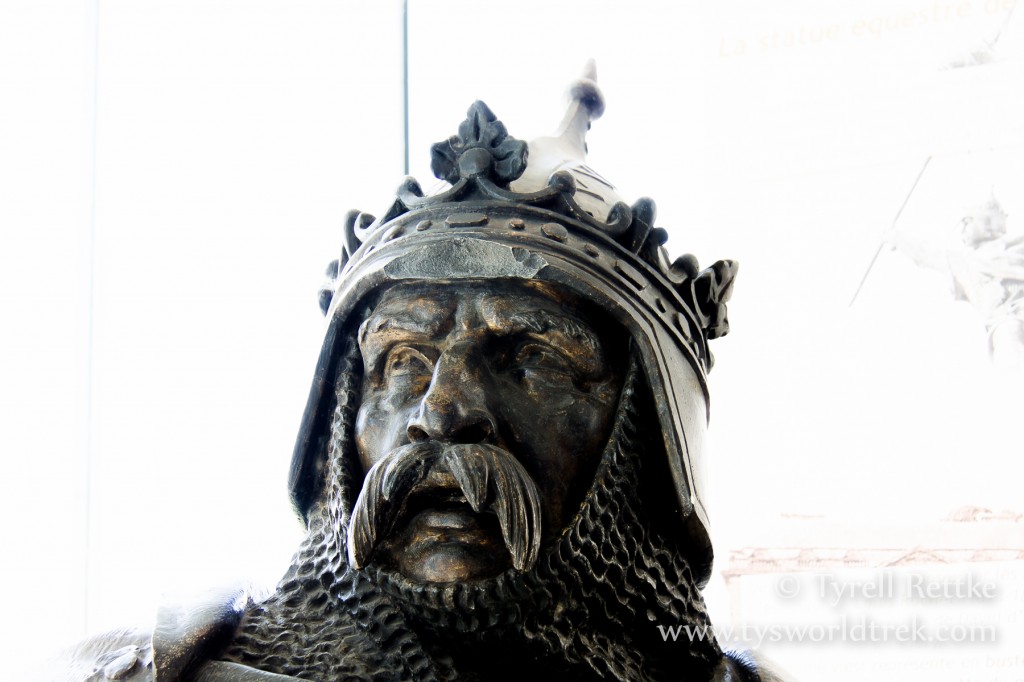 William the Conqueror was the illegitimate child of the Duke of Normandy, born in 1028. After many years of infighting William became the Duke of Normandy. In 1066 he had secured his hold on Normandy so the descendant of viking raiders then set his eyes on the crown of England. He was the cousin, though illegitimate, of King Edward (The confessor) of England and by the 1050’s was a contender. There were other claimants, so a power struggle ensued, with William being crowned the first Norman King of England on Christmas Day, 1066.
William the Conqueror was the illegitimate child of the Duke of Normandy, born in 1028. After many years of infighting William became the Duke of Normandy. In 1066 he had secured his hold on Normandy so the descendant of viking raiders then set his eyes on the crown of England. He was the cousin, though illegitimate, of King Edward (The confessor) of England and by the 1050’s was a contender. There were other claimants, so a power struggle ensued, with William being crowned the first Norman King of England on Christmas Day, 1066.
I had the chance to visit one of his strong holds in Normandy recently and wanted to share some of it with you.
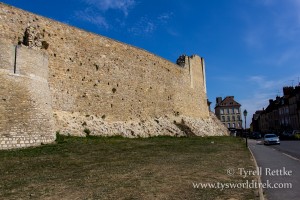 My first impression of the fortress was that it was huge. The walls seemed exceptionally thick, made of a pale limestone, they rise out of a modern town, with a paved road running around it and small shops and cafes across from it, looking over the foreboding structure. I was visiting the structure with one of the French students that was attending the English school I am currently volunteering at. We stepped inside the main building to buy our tickets. With the self guided tour ticket, came a digital tour installed on an Ipad.
My first impression of the fortress was that it was huge. The walls seemed exceptionally thick, made of a pale limestone, they rise out of a modern town, with a paved road running around it and small shops and cafes across from it, looking over the foreboding structure. I was visiting the structure with one of the French students that was attending the English school I am currently volunteering at. We stepped inside the main building to buy our tickets. With the self guided tour ticket, came a digital tour installed on an Ipad.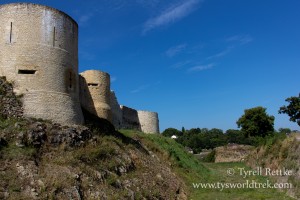
In each area, there is a round medallion that when the camera on the Ipad is pointed at, it loads that rooms 3D, augmented reality version of the room. It shows the room as it would have been back in Williams’ time. Each item has information that can be read from the Ipad. It was a very impressive tour add on.
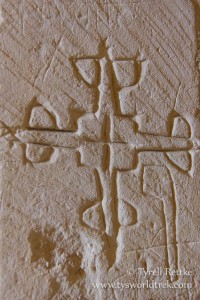
The interior of the castle is largely made of the same stone as the outside casing stones, a soft, pale limestone. I found it interesting that there were many areas where people had carved symbols and words into the stone. Here we see A rough carving of an equal armed cross. It’s unknown exactly when this was carved, but it was sometime after the 1060’s. Possibly Knights Templar later in the 1200’s? Dan Brown will have to tell us.
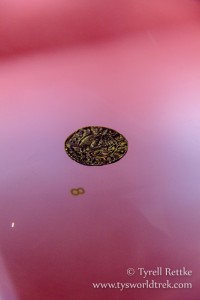
In one of the rooms, a series of artifacts that have been found during excavations and renovations including this intricate gold coin. Its thin and hand stamped (most likely with a large hammer stamp) and sits under glass now for everyone to enjoy. There are also early beads, silver and copper coins, pottery shards and other small artifacts showing the tools and items of everyday life so many years ago.
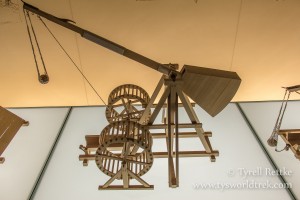
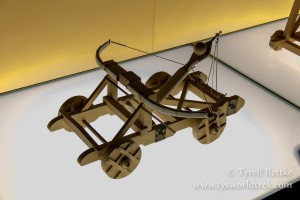 Another interesting section is the war machine room. It shows the development of ancient war machines such as catapults, massive crossbows, seize towers and trebuchet. There are models of the various designs that were used over the years up to the development of the early cannon, which marked the end of the castle and large fortress era. These early war engines could lob a 100lb stone ball 100-150 yards inflicting major damage to the walls of stone fortresses and castles.
Another interesting section is the war machine room. It shows the development of ancient war machines such as catapults, massive crossbows, seize towers and trebuchet. There are models of the various designs that were used over the years up to the development of the early cannon, which marked the end of the castle and large fortress era. These early war engines could lob a 100lb stone ball 100-150 yards inflicting major damage to the walls of stone fortresses and castles.
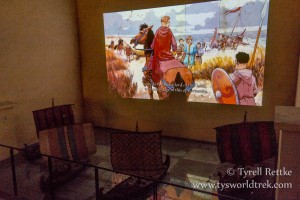
The tour of the chateau was quite impressive, including projections of actors portraying various historical figures from Williams’ time, played right on the stone walls of the darkened rooms.
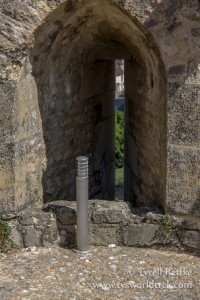
Here are a few more shots showing the fortress. The first shows a tall narrow window, with a wide inside opening, used to fire arrows out, with out exposing the archer to fire from below.
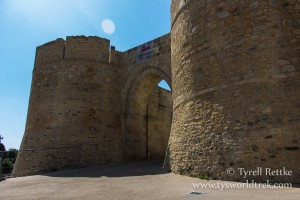 The main gate of the fortress, just after crossing the outer moat (now empty)
The main gate of the fortress, just after crossing the outer moat (now empty)
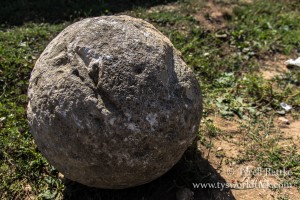 A 100 lb (+) stone ball used as ammunition to rain down on enemies below, or to bring down the walls of other fortresses.
A 100 lb (+) stone ball used as ammunition to rain down on enemies below, or to bring down the walls of other fortresses.
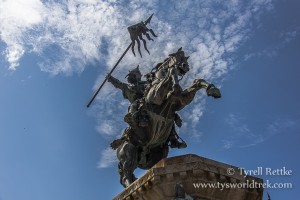 Finally, a statue of William the Conqueror that sits outside in the street area in front of the his imposing chateau, surrounded by other lords and rivals of his.
Finally, a statue of William the Conqueror that sits outside in the street area in front of the his imposing chateau, surrounded by other lords and rivals of his.
